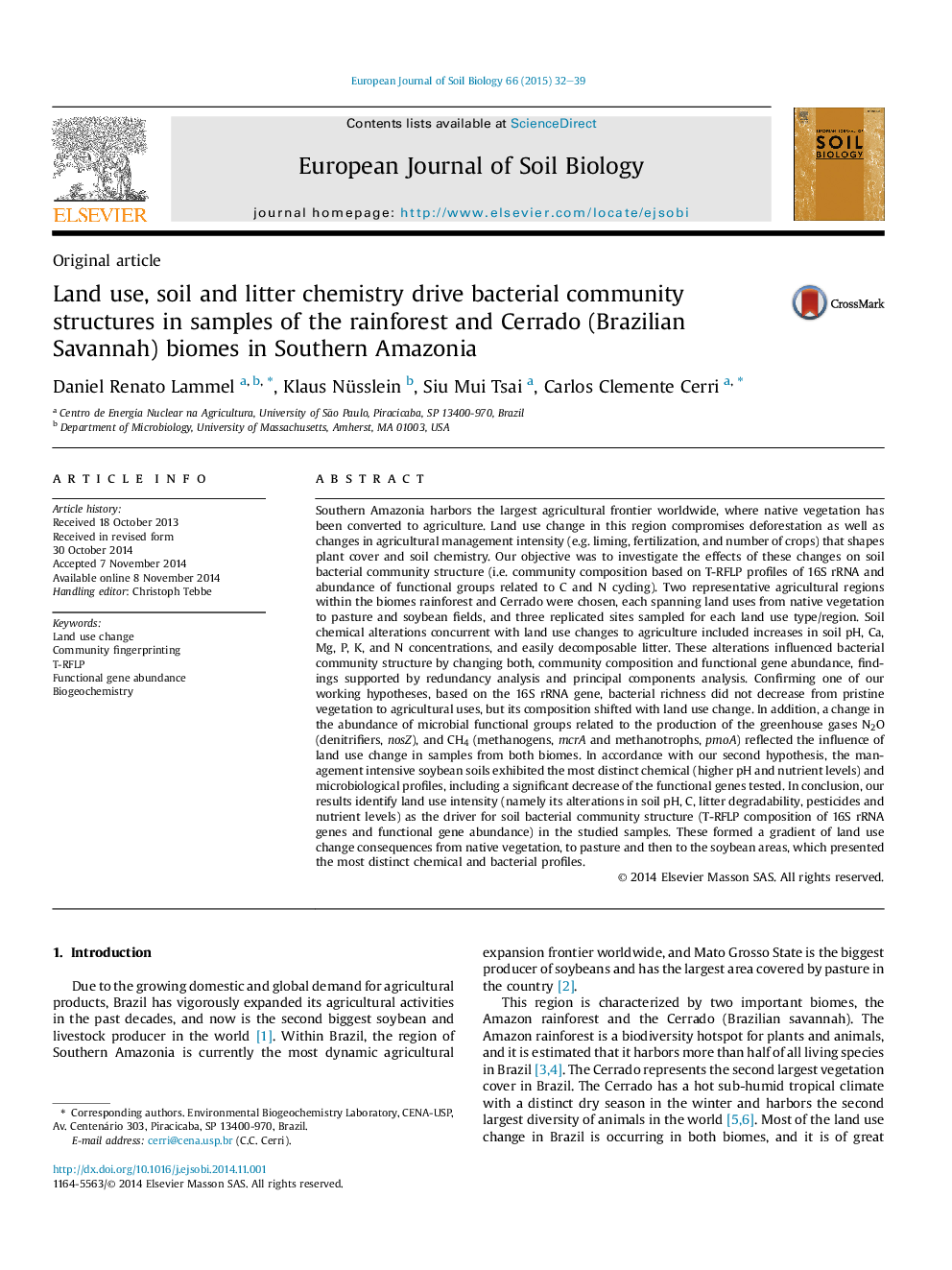| کد مقاله | کد نشریه | سال انتشار | مقاله انگلیسی | نسخه تمام متن |
|---|---|---|---|---|
| 4391810 | 1618126 | 2015 | 8 صفحه PDF | دانلود رایگان |
• Bacterial richness was maintained with change from native vegetation to agriculture.
• Bacterial types and abundance of denitrifiers/methanogens &-trophs reflect land use.
• Land use, litter and soil chemistry are drivers for bacterial community structures.
• Transition to crops altered most significantly chemical and microbiological profiles.
Southern Amazonia harbors the largest agricultural frontier worldwide, where native vegetation has been converted to agriculture. Land use change in this region compromises deforestation as well as changes in agricultural management intensity (e.g. liming, fertilization, and number of crops) that shapes plant cover and soil chemistry. Our objective was to investigate the effects of these changes on soil bacterial community structure (i.e. community composition based on T-RFLP profiles of 16S rRNA and abundance of functional groups related to C and N cycling). Two representative agricultural regions within the biomes rainforest and Cerrado were chosen, each spanning land uses from native vegetation to pasture and soybean fields, and three replicated sites sampled for each land use type/region. Soil chemical alterations concurrent with land use changes to agriculture included increases in soil pH, Ca, Mg, P, K, and N concentrations, and easily decomposable litter. These alterations influenced bacterial community structure by changing both, community composition and functional gene abundance, findings supported by redundancy analysis and principal components analysis. Confirming one of our working hypotheses, based on the 16S rRNA gene, bacterial richness did not decrease from pristine vegetation to agricultural uses, but its composition shifted with land use change. In addition, a change in the abundance of microbial functional groups related to the production of the greenhouse gases N2O (denitrifiers, nosZ), and CH4 (methanogens, mcrA and methanotrophs, pmoA) reflected the influence of land use change in samples from both biomes. In accordance with our second hypothesis, the management intensive soybean soils exhibited the most distinct chemical (higher pH and nutrient levels) and microbiological profiles, including a significant decrease of the functional genes tested. In conclusion, our results identify land use intensity (namely its alterations in soil pH, C, litter degradability, pesticides and nutrient levels) as the driver for soil bacterial community structure (T-RFLP composition of 16S rRNA genes and functional gene abundance) in the studied samples. These formed a gradient of land use change consequences from native vegetation, to pasture and then to the soybean areas, which presented the most distinct chemical and bacterial profiles.
Journal: European Journal of Soil Biology - Volume 66, January–February 2015, Pages 32–39
